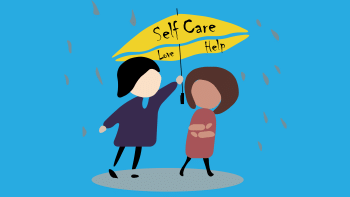Studies show that first impressions are usually formed within just 17 seconds of meeting someone new. This can be intimidating considering you might think you have no control over these 17 seconds. What if you did have control over making a good first impression?
Here are 7 basic hacks to ensure you have a great first impression.
Read the room
Be aware of your surroundings and sense the tone of the people around you. Take a moment to observe the atmosphere. This allows you to tailor your responses, aligning your tone and approach with the mood of the group, ensuring a more thoughtful and effective interaction.
Dress appropriately
Before attending any event, try to get a sense of the setting—will it be formal or casual? Dressing to match the occasion shows your precision. For job interviews, it's always better to be slightly overdressed than underdressed. Make sure you feel comfortable, wear clean, well-fitted clothes, and don't forget the details—a neat shirt, polished shoes, and a decent perfume can go a long way in leaving a positive impression.
Keep a genuine smile
Most first impressions are about eliciting the answer to one single question: Can I trust this person? Needless to say, that's where a smile does wonder. Anthropologically speaking, smiling used to make cavemen appear more trustworthy rather than coming across as a threat. Studies have also shown that a person seems more approachable when they are wearing a "Duchenne smile" — a genuine smile that causes wrinkles around both your mouth and eyes.
Be the one to approach first
Instead of waiting for the other person to make the first move, take the initiative. Approach a person with a firm handshake and a confident smile. This puts you in an active role, allowing you to set the dynamic of the conversation and stand out from the crowd. Also, by breaking the ice, you subtly demonstrate assertiveness which goes a long way.
Call the person by their name
Make an effort to remember the other person's name and use it frequently throughout the conversation. As Dale Carnegie said in his book, "How to Win Friends and Influence People", a person's name is by far the most favourite word in their vocabulary. You may know thousands of words, but the one with the most lasting influence on the other person's behaviour is their name.
Keep an open body language
Make eye contact and keep your shoulder pointed at the person you are facing. Remember to come across as confident and open-minded. But, be wary of coming across as arrogant. Know the thin line between confidence and arrogance.
In addition, it is important to mirror the other person in a way that shows there is a synchronisation between you and your counterpart. Remember, the role of your nonverbal cues starts even before you start speaking. Oftentimes, it's your body language that makes or breaks the opportunity for you.
Seek to listen first, then to be heard
Be genuinely interested in the other person. Find common grounds to stay relevant when you are talking about their interests. One of the "7 Habits of Highly Effective People" is to listen to understand, not to prepare counter-arguments. Practice mindful listening to get better at this skill over time. In other words, be more interested than interesting.
If you play your cards right, you can make a great first impression and make meaningful connections, thanks to the primacy effect. After that, the confirmation bias kicks in, which gives you an added advantage because people will now want to believe what they have known about you since the very first impression: that you are a reliable, confident person they can trust. This way, first impressions can be a powerful tool to get ahead of the crowd, as Harvey Specter from the TV show "Suits" famously said, "First impressions last."












Comments